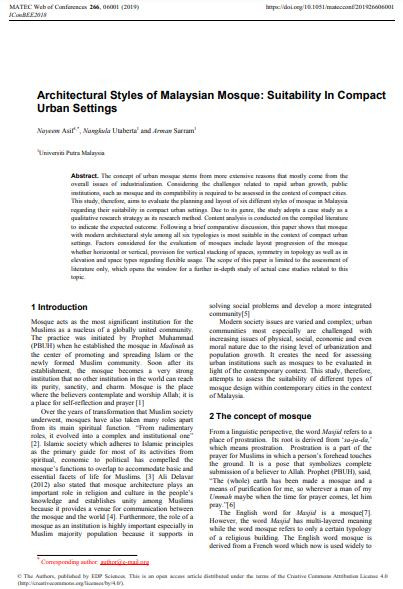
The concept of urban mosque stems from more extensive reasons that mostly come from the overall issues of industrialization. Considering the challenges related to rapid urban growth, public institutions, such as mosque and its compatibility is required to be assessed in the context of compact cities. This study, therefore, aims to evaluate the planning and layout of six different styles of mosque in Malaysia regarding their suitability in compact urban settings. Due to its genre, the study adopts a case study as a qualitative research strategy as its research method. Content analysis is conducted on the compiled literature to indicate the expected outcome. Following a brief comparative discussion, this paper shows that mosque with modern architectural style among all six typologies is most suitable in the context of compact urban settings. Factors considered for the evaluation of mosques include layout progression of the mosque whether horizontal or vertical, provision for vertical stacking of spaces, symmetry in topology as well as in elevation and space types regarding flexible usage. The scope of this paper is limited to the assessment of literature only, which opens the window for a further in-depth study of actual case studies related to this topic.
I agree to the terms outlined below:
You agree to upload and assign Mosqpedia Database the rights to use the content worldwide and in perpetuity across all current and future media platforms. Mosqpedia Database may edit, copy, adapt and translate your contribution.
The content will be distributed under the Creative Commons Attribution-Deed – Attribution-NonCommercial-NoDerivatives 4.0 International – Creative Commons
All data will be stored in line with data protection regulations.